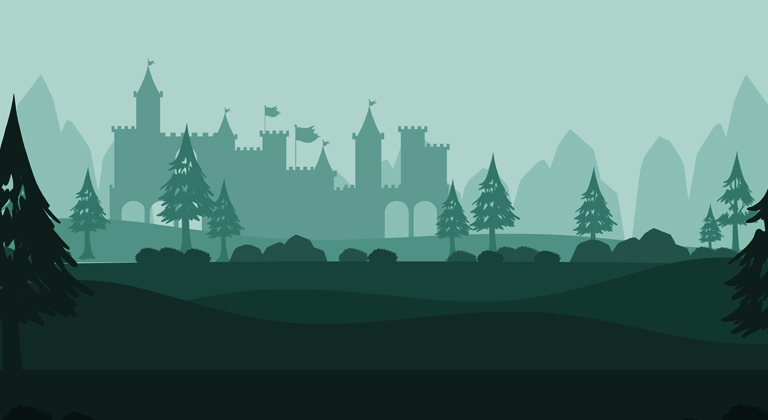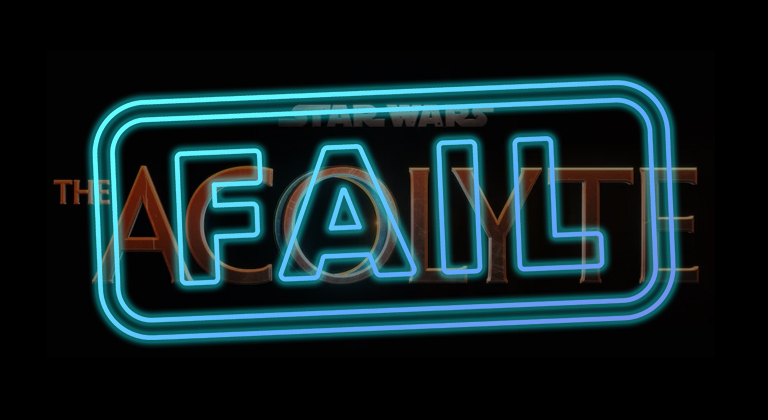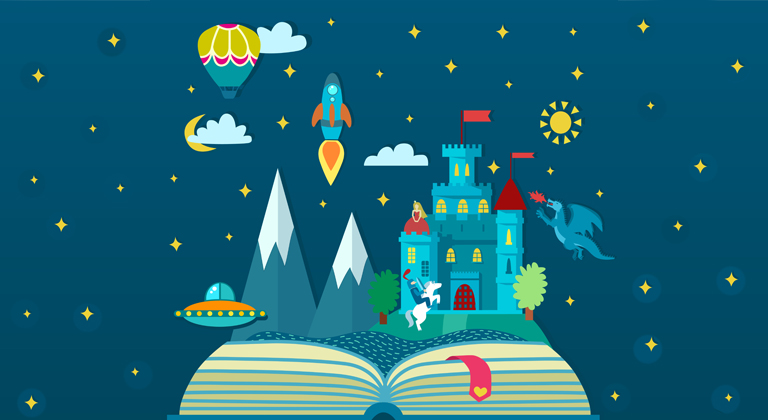What can writers learn by studying Sarah J. Maas?
Ever wonder what makes certain authors skyrocket in popularity while others struggle to break through? Sarah J. Maas is a name on nearly every reader’s lips today, but not everyone knows she began her journey by self-publishing Throne of Glass before going the traditional publishing route and selling 38 million books worldwide. In a relatively short time, Maas has built a literary empire with her intricate worlds, complex characters, and unforgettable romances. But what’s the secret behind her meteoric rise, and what can we, as writers, learn from it?
That’s exactly what Ginger sets out to explore in today’s article as he examines the key writing strategies that have propelled Maas to best-seller status. From her richly detailed world-building and compelling characters to her savvy marketing tactics and sheer persistence, there are countless lessons we can take from her path to success—lessons that can help us transform our own writing careers.
I saw a meme recently that asked the question: “Why do women go from not reading a book for 10 years to suddenly making Sarah J. Maas their entire personality?”
It’s a dumb meme for many different reasons (I don’t know a single woman who doesn’t read – much less one who hadn’t touched a book in ten years!) However, it does demonstrate the thermonuclear-level impact Sarah J. Maas’ books have made on literature in such a short space of time.
Now, if you’re not familiar with Sarah J. Maas – first off, shame on you!
(Just joking!)
Sarah J. Maas is an American author from New York City. Her first novel, Throne of Glass, hit the bookshelves in August 2012 and in the years that followed, she’s managed to go on to sell over 38 million copies of her books. They’ve been translated into 38 different languages, and Maas has become a New York Times bestselling author multiple times over.
What’s even more incredible is that she started it all off through self-publishing – taking the same route from pen to page that many of us are traveling right now!
So, given that Sarah J. Maas has become big enough to become meme-worthy, I thought it might be valuable to study her incredibly popular books and see what lessons aspiring authors can learn from them.
The Path to Best-Seller Status
Sarah J. Maas is best known for her Throne of Glass series, which is targeted towards a Young Adult audience. A tale of high fantasy, it follows the story of Celaena Sardothien, a young assassin forced to compete in a deadly tournament to win her freedom. The series has been praised for its fast-paced action, complex characters, and sweeping world-building, and concluded with a seventh book in the saga (not including a collection of novellas) published in 2018.
What’s truly remarkable is that Maas began writing what would eventually become Throne of Glass at just sixteen years old, sharing it on FictionPress.com, a sister-site of FanFiction.net dedicated to original fiction.
Very quickly, the book became the most popular series on the site – leading Maas to seek a traditional publishing contract. Bloomsbury eventually brought the series to bookstores worldwide, and Maas has been publishing with them ever since.
And “ever since” has seen a lot of books get written! Since the release of Throne of Glass, she’s gone on to publish the A Court of Thorns and Roses series plus another trilogy of books called Crescent City.
Maas is a talented and prolific writer who achieved great success using the springboard of self-publishing, and I believe her books offer some really valuable lessons for aspiring authors. Here are the top-ten things I think that authors can learn by studying her writing:
1. The importance of world-building
One of the most impressive aspects of Maas’s writing is her ability to create richly detailed and immersive worlds. Whether she’s writing about the Kingdom of Adarlan in Throne of Glass, or the faerie courts of Prythian, her books are filled with fascinating cultures, customs, and landscapes. Maas takes the time to develop her world-building from the ground up, and it shows in the depth and complexity of her stories.
2. The power of strong characters
Feyre Archeron was resurrected as a High Fae. Celaena Sardothien was raised by an assassin. Both strong women who survive in hostile worlds, they demonstrate how Maas’s ability to craft complex, relatable, and unforgettable characters plays such an important role in her success. She has a gift for creating characters that readers can connect with on an emotional level, with backstories and motivations that make them instantly relatable and utterly compelling.
3. The value of fast-paced action
Even though most of her books often weigh in at 150,000+ words, nobody can deny that they’re page-turners. Maas’s books are always full of exciting and action-packed sequences designed to keep her readers engaged and turning the pages. Maas’s action scenes are well-written and easy to follow, and they help to move the story along at a brisk pace – even when she’s balancing that action out with slower and romantic scenes.
4. The art of writing romance
Speaking of romance… While Maas first found success with her young adult series, it was the Court of Thorne and Roses series that made her meme-worthy – a series of books filled with spicy scenes that have become the stuff of legend on TikTok. Undeniably, Maas is a master of writing romantic (and sexual) relationships. Her love stories are passionate, believable, and full of chemistry. Maas also knows how to balance romance with other elements of her storytelling, such as action and adventure, to ensure that they stand shoulder-to-shoulder with other great fantasy sagas.
5. The importance of foreshadowing
Sarah J. Maas has been called “the queen of foreshadowing” and the evidence to support that claim can be found across all her books. She often hints at future events early in her stories, which helps to build suspense and keep readers debating what’s going to happen next across hundreds of forums and Facebook groups. Good authors use foreshadowing to create a sense of satisfaction when a plot point is finally revealed. Maas does it so well that her books are practically addictive!
6. The power of symbolism
Amarantha’s curse leaves all members of the Spring Court with permanent masks to prevent them from revealing their true selves. For Feyre, growing up in poverty, art is a symbol of both self-expression and privilege. Throughout her books, Maas uses symbolism to represent deeper themes and meanings that add a layer of complexity to her stories and make them ripe for dissection and discussion across the Internet.
7. The value of editing and revision
Most self-published authors consider themselves a professional when they hire an editor. Sarah J. Maas has as many as five working hard to polish each of her manuscripts – a main editor, a copyeditor, a proofer, and two proof-readers. She’s a firm believer in the importance of editing and revision and that shines in the nearly flawless composition of her books. It’s a well-known fact that editing and revision can help to improve a story’s clarity, coherence, and overall quality, but Maas takes that standard to its extreme.
8. The importance of marketing and promotion
Long before Sarah J. Maas signed her first contract with Bloomsbury, she’d already made a name for herself as the most-popular author on FictionPress.com – and that turned her into a savvy marketer who knows instinctively how to promote her books effectively on social media. She uses traditional social media posts, book tours, and other marketing strategies to reach a wider audience, but it’s the viral nature of her books that have really helped them achieve the dominance they have. Marketing and promotion are essential for getting your book noticed and selling copies, and Maas’s books inspire so much discussion that thousands of influencers promote her work unknowingly for free.
9. The value of persistence
Maas didn’t achieve overnight success. While her career has seemingly exploded in a very short space of time, it actually took her years of hard work and dedication to become the bestselling author she is today. Like many of us, Maas started off writing and self-publishing on a fan fiction site, and her first publishing contract was only signed after years of working to build an audience there. For much of her writing career, the only royalties Maas could cash was praise and appreciation from her readers; but that was building a firm foundation for the career that followed. Persistence is essential for any writer who wants to succeed, and Maas has persisted longer and harder than many who have come before her.
10. The importance of writing what you love
Perhaps the final and most important thing we can learn from Sarah J. Maas is that she writes the kind of stories that she enjoys reading. This is evident in the passion and enthusiasm that comes through in her work – and demonstrates how she’s able to be so prolific, often pushing out two 150,000+ word novels in a single year. Writing what you love is the best way to create authentic and engaging stories, and also the best way to ensure you don’t burn yourself out or hit the wall of writer’s block.
Conclusion
You don’t sell 38 million copies of your books without knowing a thing or two about writing, and by studying the writing of Sarah J. Maas, you can learn valuable lessons from her about world-building, character development, foreshadowing, symbolism, and how to edit and market your books effectively.
Through persistence and writing what she loves, Maas has earned her place among the best-sellers – and will forever be remembered as a talented and successful author who can provide a wealth of inspiration for aspiring writers.












COURT of thorns and roses, not crown of Thorne and Roses.
Fixed that, thanks!
It’s Feyre not Fayre. 🙂
I’m not sure fan fiction publishing makes you an “indie author” in the *cough* “traditional” sense of the word, does it? I was really excited to read that she was indie but then was kind of disappointed to find out that’s what was being referred to. I think that’s like saying the writer of 50 Shades was indie before she went trad. She wasn’t indie, she was a popular fan fiction writer. Being “indie” to me, means you are actively marketing a work and publishing it on a paid platform. But maybe there are looser definitions!